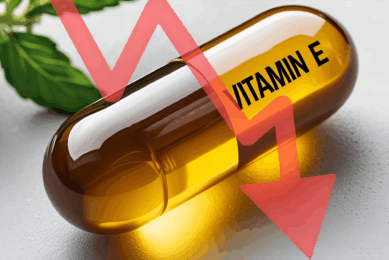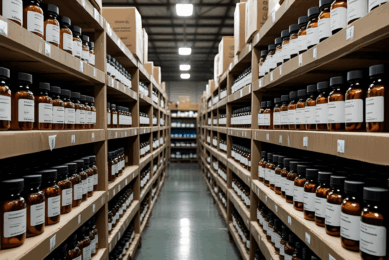Trace mineral sources and their impact on vitamin stability

Stability of both trace minerals and vitamins is an important consideration that can affect degradation and nutrient profiles in feed, directly impacting feed quality and nutritional value.
Trace minerals and vitamins are often combined in the premix, where the opportunity for negative interactions is high but often underestimated. Trace minerals from inorganic sources, especially sulphates, are considered catalysts for free radical formation, and through reduction and oxidation reactions, the inclusion of these trace minerals within the vitamin premix can lead to rapid degradation of vitamins. Trace minerals vary in terms of their redox potential, with copper, iron and zinc being more reactive. Vitamins also vary in their susceptibility to these reactions. Several studies show both fat and water-soluble vitamins being prone to degradation when they are in contact with inorganic trace mineral sources. The ability of vitamins to retain activity under any of the previously mentioned stressors is referred to as ‘stability’. Research shows that as much as 55% of vitamin B6 activity was lost when included in a vitamin premix containing inorganic trace minerals compared to a 24% loss in a vitamin premix containing no added trace minerals. Similarly, the stability of vitamin A, D3, E, K3, Thiamin, B12, Folic acid and Biotin were also affected when stored in combination with inorganic trace minerals.
Substitution of inorganic trace minerals
Since separating vitamins and trace minerals for the purpose of shipping, handling, storage and feed processing are not always feasible, there is a tendency to add a margin of safety or basically to over-formulate vitamins. This approach, even though inefficient, is doable when vitamin prices are favourable but can be costly when the price fluctuates and certain vitamins are in short supply. One solution is to substitute inorganic trace minerals within the premix with the organic form. Not only are organic trace minerals more bioavailable and better utilised by the animal, but they can also be included at lower inclusion rates. Also, several in vitro and in vivo observations have indicated that organic trace minerals, especially in the chelated form, had less destructive effects on vitamin stability than inorganic forms.
Effect of trace mineral source
In a recent study looking at the effect of trace mineral source (inorganic or Alltech’s Bioplex trace minerals) on vitamin stability in a premix in storage, the authors (Table 1) reported a substantial reduction in vitamin stability when the vitamins were stored in combination with the inorganic trace minerals. Overall, the vitamins in the inorganic mineral premix lost more activity than those of the Bioplex premix. Some specific findings included:
- The activities of vitamin A and vitamin K in the inorganic premix were 10.36% and 6.11% of the Bioplex premix, respectively.
- The activities of thiamin and folic acid in the inorganic premix were 23.77% and 33.27% of the Bioplex premix, respectively.
- The activity of vitamin D3 in the inorganic premix lost almost 50% stability compared with the Bioplex premix, and the activities of riboflavin and pyridoxine in the inorganic premix lost 35% compared with that in the Bioplex premix.
These losses are not only substantial and costly but can also potentially create sub-clinical deficiencies and have a detrimental effect on performance. Researchers concluded that totally replacing inorganic minerals with Bioplex minerals in a vitamin-mineral premix can significantly increase the stability of vitamins in feed premixes containing both vitamins and trace minerals.
Impact on other ingredients
Inorganic trace minerals can also negatively impact other ingredients, including dietary antioxidants, such as BHT, and even exogenous phytase enzymes. Most monogastric feeds contain an exogenous phytase enzyme, and enzymes are also typically part of the premix where contact with inorganic trace minerals can inhibit enzyme activity.
When comparing the impact of different trace mineral types and sources on the activities of 3 commercially available phytase products, researchers reported a significant relationship between phytase inhibition, trace mineral type, source and concentration. Overall, the trace mineral source with the least inhibitory effect across the minerals and phytases tested was Bioplex trace minerals. In this study, different organic trace mineral products exhibited different abilities to inhibit phytase, i.e., not all trace mineral products are created equal, emphasizing the need for product-specific research when evaluating different products.
Taking into consideration the relatively low bioavailability (lower absorption and utilisation by the animal), the fact that there is no actual dietary requirement for trace minerals in the inorganic form, and the negative impact of inorganic trace minerals in the premix on vitamin stability and enzyme activity, it makes sense to consider alternative trace mineral solutions and supplementation strategies.











